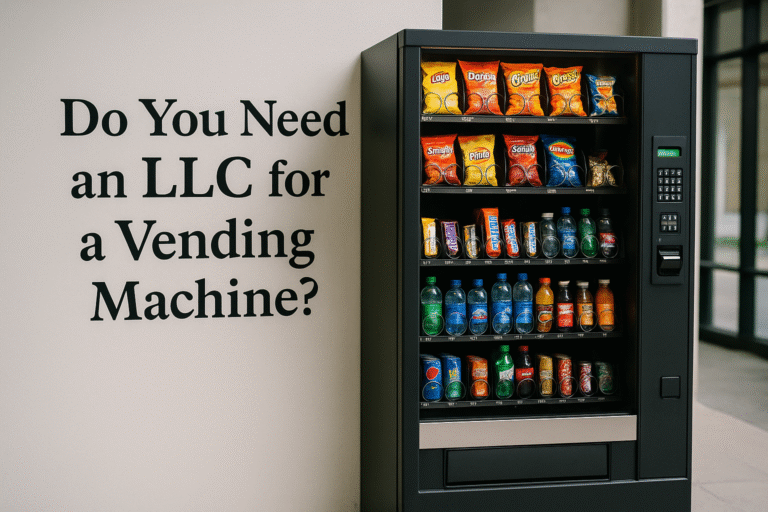In today’s dynamic business environment, choices abound for budding entrepreneurs. Among these, the allure of the vending machine business stands juxtaposed against the established might of traditional business models. As we dive deep into each model’s intricacies, we will unravel their unique strengths and challenges, ensuring you’re well-informed to make your entrepreneurial choice
Understanding the Vending Machine Business Model
From the modest machines dispensing candy in arcades to the sophisticated ones today offering electronics, the vending machine’s journey is a testament to its adaptability and relevance. The concept is appealing in its simplicity: a machine strategically placed in high-footfall areas, stocked with products and ready for transactions.
With technology’s advent, the vending machine business has become even more seamless. Touchscreens, cashless transactions, and even AI-powered product recommendations have elevated the vending experience from mere convenience to a novelty. Furthermore, as urban spaces become more congested, and convenience becomes paramount, vending machines find their niche in offering quick solutions without human interaction’s need.
However, while they sound lucrative, vending machine businesses aren’t without their challenges. The success of these machines hinges on multiple factors: the right location, the right products, and the right price points. Regular maintenance and updating the technology to cater to modern consumers is crucial, lest the machine becomes just another obsolete box in a corner.
Basics of Traditional Business Models
Traditional business models evoke images of brick-and-mortar establishments, bustling with activity, staff attending to customers, and products or services exchanged over counters. These models have been the backbone of commerce for centuries, leveraging direct human interactions to foster trust and drive sales.
Yet, the essence of traditional businesses transcends their physical nature. They often act as community hubs, fostering relationships, loyalty, and offering personalized experiences that digital platforms often struggle to replicate. From a diner where the owner knows your regular order to the store that stocks your favorite brand, the personal touch is irreplaceable.
However, the 21st century brought with it a paradigm shift. The rise of e-commerce and the digital revolution has redefined consumer expectations. Today’s traditional businesses grapple with the dual challenge of maintaining their legacy and charm while simultaneously adapting to a world that demands digital presence and convenience.
Start-Up Costs: Vending Machine Business vs. Traditional Business
Venturing into the vending machine business often demands a relatively modest capital investment. The primary expenses revolve around purchasing the machine and products for stocking. Depending on the sophistication of the machine and the chosen location (with prime spots demanding higher rents),
the costs can vary.
In stark contrast, traditional businesses come with a heftier price tag at the outset. Whether it’s leasing a prime commercial space, curating the interior ambiance, stocking up on inventory, or hiring and training staff, every aspect demands financial commitment. And while they offer a potential for higher returns, the break-even point might be further down the road compared to vending machine setups.
However, it’s essential to consider the long-term perspective. Vending machines might require periodic technological upgrades and frequent restocks. Simultaneously, a traditional business setup might demand ongoing expenses in rent, salaries, utilities, and more. Therefore, while the initial investment in vending machines might be lower, the recurring costs can add up, and entrepreneurs need to be prepared for the same.
Operational Expenses and Overhead
The beauty of vending machine businesses lies in their operational efficiency. Once set up, they function autonomously. The expenses incurred post-setup are primarily for restocking products, regular maintenance, and perhaps electricity. The lack of full-time employees further curtails operational costs, making it a lean business model.
Conversely, traditional businesses have a recurring expenditure list that’s considerably lengthier. From monthly rents and utility bills to employee wages and marketing costs, the financial commitments are ongoing. This necessitates a consistent and robust revenue stream to ensure profitability.
Yet, it’s in these overheads that traditional businesses find their silver lining. The costs incurred in training staff, curating store ambiance, or hosting events all contribute to creating a unique brand identity. They offer an experience, not just a product or service. And consumers, recognizing this, are often willing to pay a premium, leading to potentially higher profit margins than vending setups.
Flexibility and Scalability in the Vending Machine Business
Vending machines epitomize flexibility in the business realm. For an entrepreneur, starting small is entirely feasible. They can gauge the market with a few machines and then progressively expand based on demand and profitability. Furthermore, if a machine doesn’t perform optimally at a location, relocating it is relatively hassle-free.
This ease of scalability is enticing. As the business grows, one can diversify the product range, experiment with premium locations, or even integrate newer technologies to enhance the consumer experience. The modular nature of this business model allows for rapid expansion without exponential increases in operational complexities.
However, it’s not all smooth sailing. Scalability, while a strength, can also be a double-edged sword. As the number of machines grows, so does the need for meticulous inventory management, regular maintenance checks, and dealing with varying rental agreements for different locations. If not managed efficiently, the very flexibility of the vending machine model can become its Achilles’ heel.
Customer Interaction and Branding in Traditional Businesses
Traditional businesses thrive on the human touch. The interactions between staff and customers, the ability to address grievances in real-time, and the opportunity to up-sell or cross-sell based on in-person conversations are unparalleled advantages. Such interactions breed loyalty, with customers often returning because of the rapport they share with the business.
Moreover, these businesses offer a tangible space for branding. Whether it’s the store layout, the ambiance, the staff’s uniform, or even the background music, every element can be tailored to resonate with the brand’s ethos. Over time, these nuances solidify brand identity, making it recognizable and relatable.
Yet, in this strength lies a potential vulnerability. Inconsistent service, an underwhelming in-store experience, or even a single negative customer interaction can tarnish the brand’s image. In an era of social media and online reviews, traditional businesses, more than ever, need to ensure that their in-person interactions are consistently impeccable.
Risk Factors: Vending Machine Business vs. Traditional Business
Both business models, despite their apparent differences, share a universal truth: they are fraught with risks. Vending machines, for instance, are susceptible to vandalism, theft, or even technological malfunctions. Moreover, the dependency on prime locations means any shift in footfall patterns can significantly impact revenues.
Traditional businesses aren’t immune either. From changing consumer preferences and market downturns to unexpected events like the COVID-19 pandemic, the challenges are multifaceted. Moreover, the higher operational costs mean that any prolonged periods of low revenues can be detrimental.
Yet, where there’s risk, there’s also opportunity. Both models, when approached with research, foresight, and adaptability, have the potential to navigate these challenges. Diversifying product offerings, leveraging technology, and prioritizing customer satisfaction can go a long way in mitigating risks for both vending machines and traditional businesses.
Profit Margins and Return on Investment (ROI)
At the heart of any business endeavor lies the quest for profitability. Vending machines, with their low operational costs, often promise quicker returns on investment. The direct relationship between the product’s cost and its selling price, combined with minimal overheads, can lead to attractive profit margins, especially if the machines are strategically placed and well-stocked.
However, traditional businesses, despite their higher operational costs, have a unique advantage. They offer an experience, and in doing so, can command higher price points for their products or services. A restaurant with a captivating ambiance, for instance, can charge more than a fast-food joint. Similarly, a boutique store offering personalized shopping experiences can mark up its products more than a standard retail outlet.
It’s essential, though, to approach profitability with a holistic perspective. While vending machines might offer quick returns, their revenue potential might plateau after a point. Traditional businesses, on the other hand, might have a longer path to break-even but could offer sustained growth and profitability in the long run.
Adapting to Market Changes and Trends
The business landscape is ever-evolving, and adaptability often becomes the difference between success and obsolescence. Vending machines, given their lean structure, can quickly pivot to match market trends. Whether it’s stocking up on trending products, integrating new payment methods, or even relocating based on changing footfall patterns, their agility is commendable.
Traditional businesses, however, have a more intricate dance to perform. While they have the advantage of direct customer feedback, making wholesale changes can be challenging. Pivoting might involve retraining staff, revamping store layouts, or even rebranding entirely. However, this inertia also means that once a trend is identified and incorporated, traditional businesses can extract its value over a more extended period.
In this dynamic tug-of-war between agility and sustainability, businesses must find their balance. While vending machines can ride the wave of fleeting trends, traditional businesses can build their legacy by becoming trendsetters themselves.
Future Prospects: Vending Machine Business vs. Traditional Business
Peering into the future, vending machines show immense promise. As urban spaces become denser and time becomes a premium, the convenience they offer will only become more valuable. With advancements in technology, we might soon see machines offering a wider range of products, personalized recommendations, or even interactive shopping experiences.
Traditional businesses, on the other hand, face the dual challenge and opportunity of the digital age. While online shopping and digital services pose threats, they also offer avenues for expansion. Hybrid models, where traditional stores blend with online experiences, might become the norm. Brick-and-mortar establishments will focus more on experiential retail, offering value beyond mere transactions.
Both vending machine businesses and traditional models come with their unique set of strengths, challenges, and opportunities. For entrepreneurs, the choice hinges on their vision, risk appetite, and resources. In the vast ocean of commerce, both these models are but vessels. The success of the voyage, however, depends as much on the ship as on the sailor.
Conclusion
The decision to venture into a vending machine business or a traditional brick-and-mortar establishment isn’t black and white. Both present distinct advantages and challenges. Vending machines promise flexibility, low overheads, and adaptability, making them an enticing proposition for the modern entrepreneur. Traditional businesses, with their rich history and the human touch, offer depth, brand identity, and customer loyalty that machines might find challenging to replicate. Ultimately, the choice hinges on individual entrepreneurial goals, resources, and risk tolerance. In the diverse spectrum of business opportunities, it’s essential to find the model that resonates most with one’s vision and passion.





